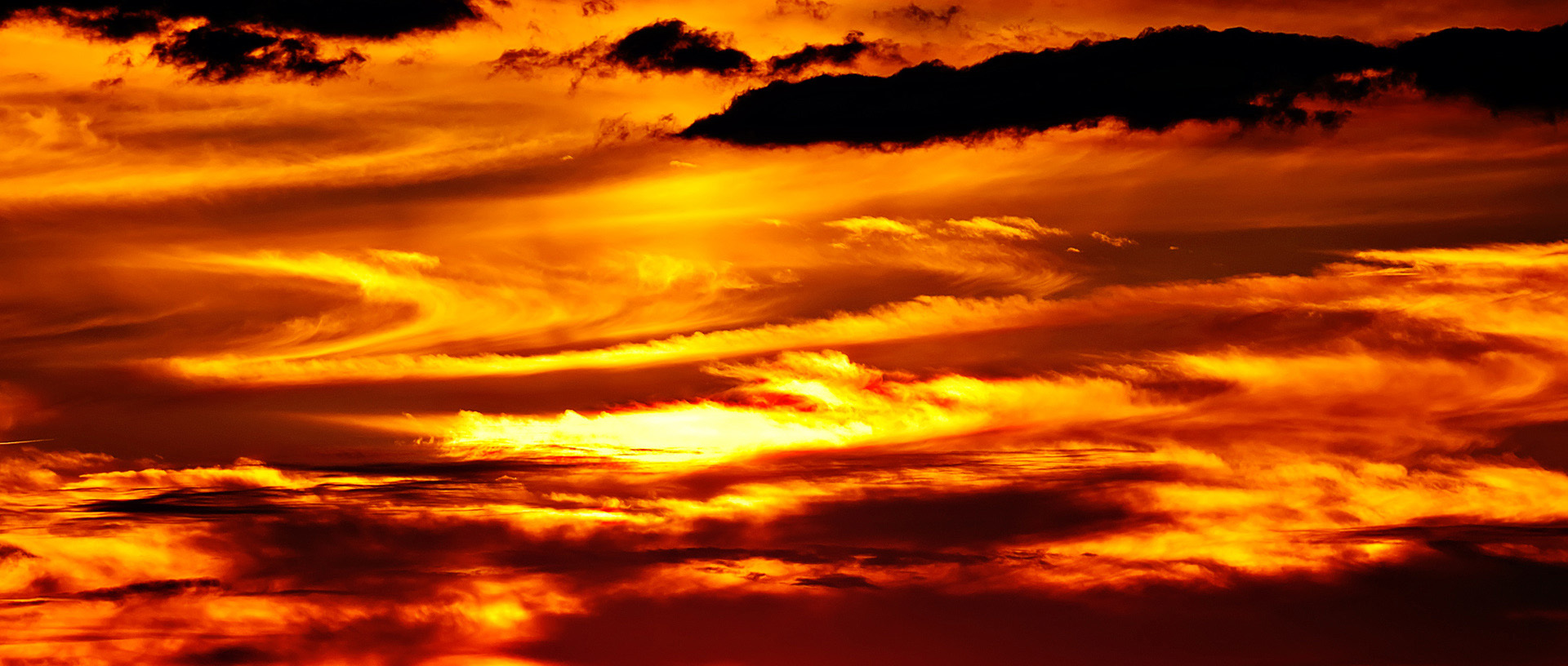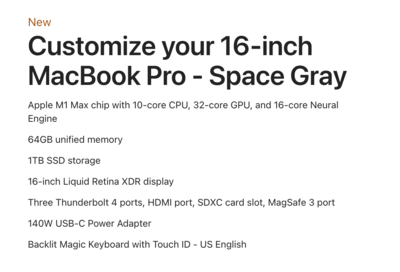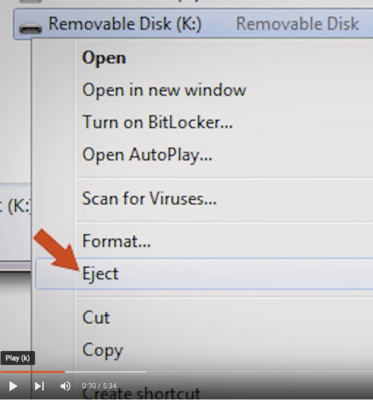-
Posts
4,103 -
Joined
-
Last visited
-
Days Won
52
Everything posted by Brian
-
Nope. The video card is under-powered. You really want a NVIDIA GeForce RTX 3070 or 3080. Again, it sucks to be in the market for a new computer. It's even worse since you seem to live in OZ. Your budget should be around A$ 4000. I'd recommend this one: https://www.dell.com/en-au/work/shop/desktops-workstations-all-in-ones/xps-desktop/spd/xps-8950-desktop/smhdx89508400au?view=configurations
-
Personally, I would avoid all-in-one computers. For the same reason that I advise against getting a laptop. I know it sounds convenient and easy, but find something else.
-
If that doesn't work, she will need to send it out for Professional Data Recovery: Gillware Data Recovery Services I'd budget $1000. It might be less though.
-
THAT IS HER PROBLEM. DO NOT USE THOSE "ADAPTER" CARDS IN CAMERA, All those adapters are meant for is to convert the Micro SD Card to SD so you can dump images into your computer. (Like if you have a device such as a GoPro that only uses Micro SD Cards.) Your friend is looking at spending money. She will need a card reader, such as this one that has a Micro USB slot: SanDisk ImageMate PRO USB Type-C Multi-Card Reader/Writer and Data Recovery software, such as RescuePro Deluxe. Then have the software scan the card. I'm hoping she will be lucky and have access to the images, BUT THERE IS A VERY GOOD CHANCE THAT SHE IS F*CKED, to put it bluntly. Especially if the images are corrupted. I'm sorry, Garbage-In-Garbage-Out. But let's jump off that Bridge when we get to it.
-

Cache purge question, external drive ok?
Brian replied to Addie Mears's topic in The Macintosh User Group
The good news is, with Apple going to the M1X CPU Chip, everything is built into one chip, so you only have only two options: RAM and HD Space. Again, both of these options are built into one CPU Chip, so you can't upgrade anything after the fact. IF need more of something in a year or so, you are buying a new Mac Laptop. So think of them as sealed units. I just went to Apple's website and configured this: I went with 64GB instead of the default 32GB, I also picked the fastest and most expensive 16" MBP in the Right Column. Granted, the M1 line handles RAM differently, but as I've said before, when I build my computers, I have a 7 year time-frame in mind and while 32GB might be fine for "Now," there is no guarantee that Adobe won't come out with some sort of update that makes it even more bloated than it is. By going for the "Big Guns" now, it gives me a better lifespan chance in the future. Oh, the cost of this MBP? $3899.00 before AppleCare, Shipping and Tax. That's where I get the $4300 number from. Just think, my Superfast 2017 27" iMac is now starting to act sluggish with the latest PS update. It's only going to get worse as time goes on. As of right now, I'm looking at a Mac Studio, but I really don't feel like forking out $5200 for a stupid computer. -

Cache purge question, external drive ok?
Brian replied to Addie Mears's topic in The Macintosh User Group
Right. 32.23GB free…THIS IS NOT GOOD. This is why PS is complaining. You want that number closer to 100 GB free. Otherwise bad things will eventually start happening, like your computer not booting at all. I hate 250GB HDs. They cause so many problems. In order to move the scratch disk, plug in an external drive and select it. Then un-check Macintosh HD and restart photoshop. Black Boxes are a sign that PS doesn’t like your Graphics Card and/or Video Drivers. Once again, it’s a stupid underpowered Mac Laptop. Unless you are forking out $4300, you will eventually run into problems. It might work for 18-24 months, than all it takes is for Adobe to do a few updates and then you have nothing but problems. what gets people in trouble is they can’t afford $4300, so they buy something more in line with their budget, instead of saving more and waiting. But it’s a Mac! I thought they were supposed to be good for Photography!! Sure! Just as long as you upgrade the video card, HD, RAM at the time of purchase. The MBPs that I recommend, you buy directly from Apple’s Website. You will NEVER get the “Good Configurations” buying it off the shelf, unless you are really really really picky about the technical details. Do you have a Thunderbolt 3 Port? It looks like a USB-C port with a lightning bolt icon above it. -
The other thing to try is, to turn off "Use Graphics Processor" in the Performance Section of Photoshop's preferences and see how that works. Now, PS will complain and it will lag but I'm just curious to see if the problem goes away or not.
-

Cache purge question, external drive ok?
Brian replied to Addie Mears's topic in The Macintosh User Group
Give this a read. You are going to need to move that Scratch Disk. NOW! I will tell you this, if you are working off an el-cheapo 5400RPM HD that's only USB 3.0, Photoshop might become a bit laggy. So you might want to find out what is occupying that space on the internal HD. By moving the Scratch Disk, you are just treating the symptom, not the problem itself. -

Cache purge question, external drive ok?
Brian replied to Addie Mears's topic in The Macintosh User Group
This is due to lack of space on the Hard Drive where the Scratch Disk Resides. Even though you think you are editing off an external, the Scratch Disk is more than likely on the "Macintosh HD." I'm taking a wild guess and this is a Mac Laptop with a stupidly small 250GB HD? This is where Damien and my opinions differ. I actually edit off an external, BUT! I'm also using a Thunderbolt 3 Drive, so there is no bottle-neck. I also clone this HD on a regular basis. Many people don't realize just how important it is to have at least a 1TB main drive, especially when it comes to Photoshop work. They just see that "Shiny new Mac Laptop" that they must have and to Hell with the specs!! They can't afford $4300+ so they go the cheaper route and then ultimately find themselves in the position you are in. So if you do work off an external, fine, but what is your backup strategy for that drive if something goes horribly wrong? A failed HD should be a few hours of inconvenience, not making frantic posts begging for help. I'm curious, do you swap out external hard drives a lot? If so, do you always Eject the drive before removing it from your computer? -
That doesn't tell me much, but it does give me the model number of your computer. It does have dedicated video memory, which is good....the bad news is, it seems to only have 2GB or 4GB of dedicated video memory, which isn't going to work driving a big fancy display. 2GB or 4GB is fine for the internal display, but if you want to run a dual-screen setup, you'll want at least 8GB of dedicated video RAM. Not to mention today's modern Photoshop also utilizes the Video Memory as a performance boost, so that complicates things. How to fix this? Buy a new laptop. Have you tried during off the laptop's display? Usually there is a keyboard short-cut that toggles the displays on and off. Usually it's the Fn + another key. Maybe that might help things out, but I'm not 100% sure.
-
Yes. The reason is, you do not have the full 500GB (or whatever) to use. Some will be lost during formatting / partitioning. Why? Because Microsoft says 1024MB is 1GB and the HD Manufacturers say 1000MB is 1GB. Or 1024GB is 1TB / 1000GB is 1TB, pick your poison. Then there is the chunk taken up by Windows. Then the 7GB that's reserved just for Windows Updates. Not to mention all the Bloatware that the Manufacturers install, and HP computers have a lot of it. There is a method to my madness. A 250GB - 500GB HD is meant for General Computing, not Photoshop work. If you get a HD that small, I guarantee you within a short time, you'll be posting in here asking why Photoshop is complaining about the Scratch Disk, etc. Since practically all laptops these days are "Sealed Units," upgrading / replacing the HD isn't as straightforward as it once was. Way back when, you could create a set of bootable media, and had an access panel on the bottom, so it was easy to swap out the HD. Manufacturers want you in the market sooner rather than later, so the old way of thinking doesn't apply. Sorry about the IPS thing. I've been traveling and have been mostly on my phone this past week. If you can get that laptop with a larger HD, do so.
-

Cache purge question, external drive ok?
Brian replied to Addie Mears's topic in The Macintosh User Group
I'm going to move this thread to the Mac Users Group and then answer the question there. -
Yeah, Catalina just had an update. I just updated mine. This happens from time-to-time. There is no "Fix," except I'd leave your Mac on and connected to the internet. Eventually things will sort themselves out.
-
First, you stated that it was a “Ultra Micro SD” card, and your last post said it was a SD card. Ultra Micro and SD are two different things. Yes, you can use a Ultra Micro Card and put it into a SD adapter, but I DO NOT RECOMMEND doing this. Too much can happen when you use those adapters, especially in-camera. Your friend needs to use a full fledged SD card with no adapters, such as this one: https://www.amazon.com/dp/B07H9J1YXN?_encoding=UTF8&psc=1&ref_=cm_sw_r_ud_dp_RT2P6YY1EEKYJB89Y16H SanDisk 64GB Extreme PRO SDXC UHS-I Card - C10, U3, V30, 4K UHD, SD Card - SDSDXXY-064G-GN4IN Hopefully she doesn’t have a Micro SD card in a adapter, because if she does, we are looking at data recovery or a re-shoot
-
Oh, this statement: “Isn’t high-def enough…” is a complete bullshit answer. If your computer can support a 4K Display, then we can lower the display settings to match that display. What sort of video cable are you using? Hopefully it’s either a HDMI or DisplayPort. What type of video card do you have? Is this a laptop? Do you have dedicated video memory?
-
Hmm… It could be a couple of things. Unfortunately I’m on vacation this week and am away from my computer. I found this page for some things to try: https://www.drivereasy.com/knowledge/fixed-the-current-input-timing-is-not-supported-by-the-monitor-display/ It could be a windows setting, a driver issue, or your display card doesn’t have enough horsepower to drive a 27” display. So I will need more info about your computer.
-
No. Missed the mark on a few items. Main HD is too small. Display is not IPS-based, so you will need to budget for an external display and a calibration device that will calibrate both your laptop and external display IPS Displays are a Pain in the Ass to find on a laptop, so it will take some searching. I’d also increase your budget . $2400 is probably a better starting point
-
What camera and what is the capacity of the card? I’ve seen some camera bodies be not compatible with cards larger than 64GB. I’ve had some that would write to a 128GB card (or 256GB card) once and then have nothing but problems writing to it a second or third time. My best guess is, corrupted card or one that isn’t compatible with her camera.
-
How does your friend transfer the images from her camera to computer? With the camera itself or a card reader? What type of card is it and how old?
-

Disk doesn't have enough space.
Brian replied to SharonRyanPhotography's topic in The Macintosh User Group
Interesting. I have no issues. But then again, FB looks the same for me, so I must not be on the upgraded version that people are having issues with. -

Disk doesn't have enough space.
Brian replied to SharonRyanPhotography's topic in The Macintosh User Group
You can repair disk permissions one of two ways. Since you have "CleanMyMac," we will go there. Open CMM, and click on "Maintenance" in the left column. Then look on the right, towards the bottom for "Repair Disk Permissions." Click the Check-box next to it and click the Run Button. As for Safari vs Firefox? I personally use Firefox and only use Safari when I have to, usually when I have to access something Apple-specific and it won't work with anything else other than Safari. Oh, bonus...Firefox is Color Managed so it reads the color profiles in your images correctly. -

Disk doesn't have enough space.
Brian replied to SharonRyanPhotography's topic in The Macintosh User Group
This is actually a common problem. Three things come to mind: When is the last time you repaired disk permissions? How is Safari setup? Where is the default folder that downloads go to? You are saving to an iCloud Account instead of a local folder and it's out of room. What I would do, is open the Finder and in the left column you should see the "Downloads" Folder. Right Click on it and select, "Get Info." Then look towards the bottom and you should see "Sharing and Permissions." Your Profile Name should be at the top of the list with the Privilege set to "Read & Write." There should be another Profile called "Everyone" with "No Access" next to it. What does yours say? To check Safari, head up to the Safari Menu, next to the Apple Menu, in the upper left corner. Then select Preferences. You then should see "File Download Location" in the General Tab. What is yours set to? The other thing you can do, is use another browser like Firefox and see what happens. That's what I use. Maybe try saving to another folder by doing a "Save As" instead of just clicking? Right Click on the file that Damien sent, and select "Save As." Then put it somewhere other than your downloads folder. -
There are two primary ways that I eject drives: Click the USB icon next to the clock on the Taskbar. Your Drive should appear in the list, right-click and select "Eject." Open the Windows Explorer, the Folder Icon on the Taskbar. Look in the left column for your drive, select it. Then right-click on it and look for "Eject." Be careful, I think it's just above "Format" and we don't want to do that.
-
Yes. One big one in particular: 256GB Boot Drive. That size is Microscopic by today's standards. With a 256GB Drive, yes it will "work," but you need to by hyper-anal on what is installed. Nothing but the OS and one or two programs should be stored on that drive. No photos, no going "next-next-next....ok...next-next-next....complete" when installing things. No putting photos on that drive to edit, etc. etc. The good news is, you can purchase a 1TB version for $100 and if you want to spend just another $79 on top of the $100, you could get a 2TB version. The rest of the machine is fine for Photoshop work.
-
You can leave the thing plugged in if you don't plan on moving it. If you do decide to remove it from your system or power it off, make sure you eject it first. If Windows complains that it can't, either close out the program or Windows Explorer that still has possession of the drive, OR reboot the computer. I know it's a pain to have to reboot, it's a bigger pain trying to recover a corrupted drive. Yeah, it was already a GPT Disk. I tweaked my instructions above.





